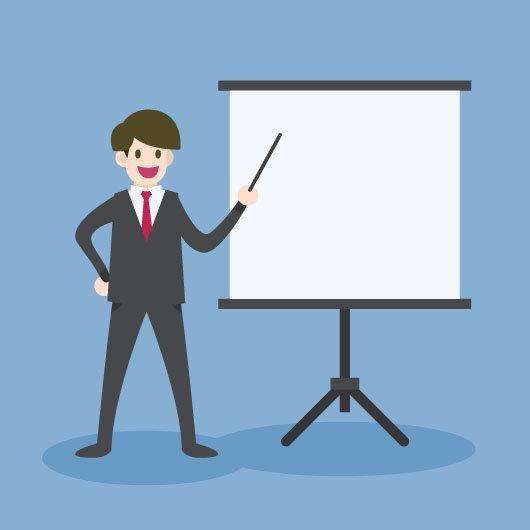Undoubtedly, the most difficult part of any presentation is its beginning. The very first words you say will determine what the audience's reaction will be to the information you present. In many ways, the introduction becomes the foundation on which you can build a strong and impressive presentation, and prepares your audience for what comes next. However, getting it right is not nearly as easy as it sounds.

According to Darlene Price, author of
Well Said: Presentations and Conversations That Get Results, you have roughly 60 seconds to capture your audience's attention and establish credibility before their minds start to drift and they lose interest. This is why it's crucial to know how to introduce yourself before a presentation in the most engaging and attention-grabbing way possible.
To help you do just that, we have put together the following list of 9 tips. If you remember these and incorporate them into your next presentation, you'll be able to hook your audience within the first minute and get your speech off to a good start.
1. Grab your audience's attention
The best way to start your presentation is to open with a short, attention-grabbing statement. Some of the most popular options are surprising facts or statistics, a powerful (and relevant) quote, a captivating story, and a thought-provoking question. Which one you prefer and think will fit your presentation the best is completely up to you. Just make sure to keep it short and simple, and try not to overthink it.
2. Welcome them
Once you have their full attention, make sure to welcome your audience to the presentation. Again, it doesn't have to be a long speech, or you'll risk losing their interest. Just a quick, genuine "welcome and thank you for coming" will be enough at this point.
3. Introduce yourself
Once you've welcomed your audience, make sure to introduce yourself. Again, try to keep it relatively short and always remember that they are not here to listen to your entire life story. A brief introduction is always more powerful and memorable than a lengthy speech.
Keep in mind that your audience is not here to listen to your personal stories, they are there to hear your presentation. The sooner you get to the material they are looking for, the happier they will be.

If you'd like to learn more about delivering presentations, why not take a look at how we can help?
Boost your presentation skills with our online courses.
RRP from $65 – limited time offer just $23.99
4. State the purpose of your presentation
Another crucial part of introducing yourself before a presentation is to summarise the aim of your speech. Of course, most of the time your audience will already be aware of your topic, but it's always a good idea to make sure it's clear to everyone. A simple one-line statement is enough, but be as specific as you can.
5. Questions
Before you start your presentation, always remember to let your audience know how you will handle questions. Different people deal with questions in different ways, so it's always useful to clarify these at the beginning.

Whether you prefer answering all the questions at the very end, or it's easier for you to answer them as you go along, it's completely up to you – but make sure to let them know what they should expect. If you need some tips on some of the best ways to handle questions, we have covered this in one of our previous articles,
How Do I Handle Questions Well When Doing Presentations?.
6. Additional details
If there are any extra details you think the audience needs to be aware of – whether some additional information about you or the material itself -, include that in the invites or handouts. This will give your audience the chance to read it either before or after your presentation, and allow you to focus on what is really important during your speech.
7. Reveal more details as you go along
Once you're on the right track and you have your audience's full attention, you will find it's not very difficult to keep them interested in what you are saying. At this point, you can add some more bits of information about yourself or the company.
8. Don't overuse the thank you's
Although it's perfectly all right to start your presentation by thanking your hosts and saying how excited you are to be there, make sure to keep it brief and then move on to your content. If you feel that this is not enough, however, you can still save some thank-you's for the end of your speech.

If you'd like to learn more about delivering presentations, why not take a look at how we can help?
Boost your presentation skills with our online courses.
RRP from $65 – limited time offer just $23.99




























